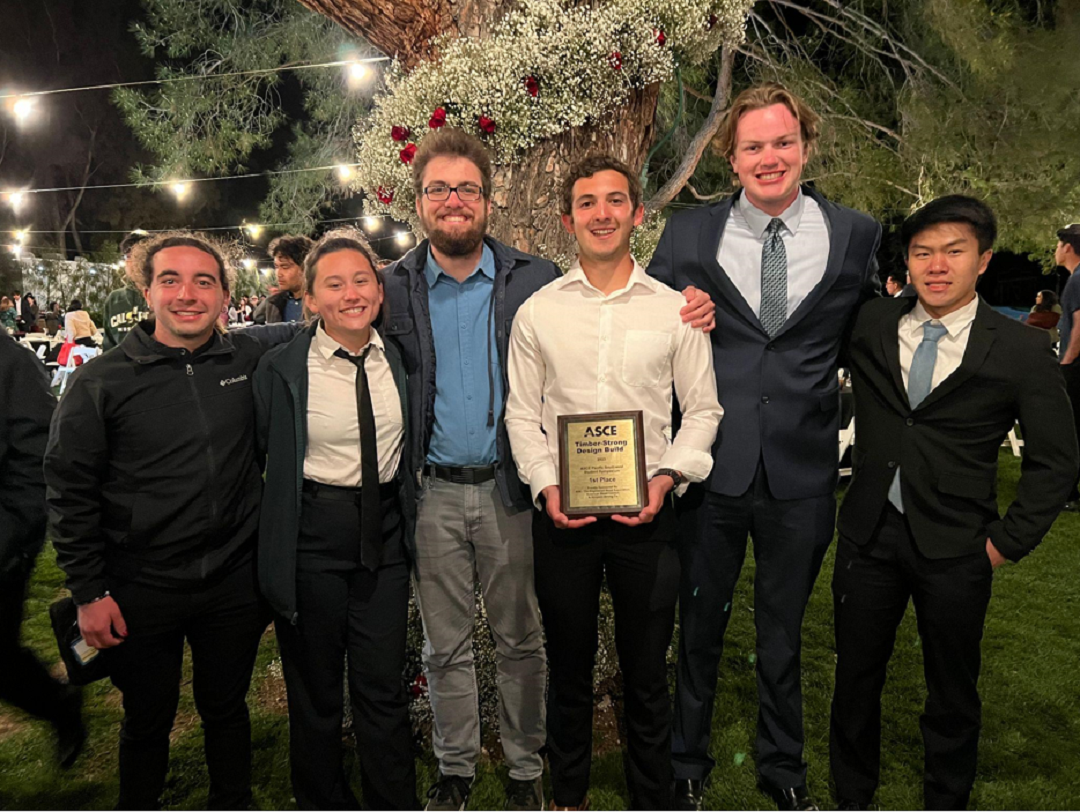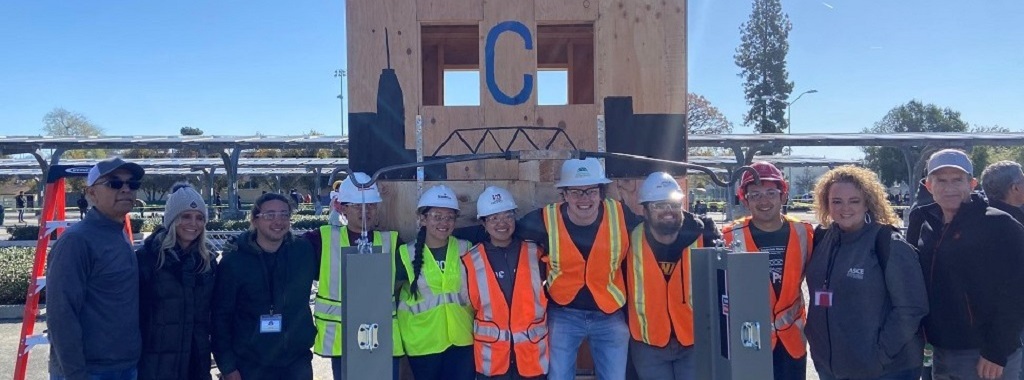The Timber-Strong Design Build℠ (TSDB℠) Competition is an annual event sponsored by the the American Society of Civil Engineers (ASCE) in partnership with the American Wood Council (AWC), APA (the Engineered Wood Association), and Simpson Strong-Tie in which student teams design and build an artistically creative two-story wood light-framed buildings that are sustainable, aesthetically pleasing, and structurally durable. The competition enables students to gain experience in common structural engineering design as well as the business management and building practices used in construction environments. The authors of this article are graduating civil engineering students in the Civil Engineering program at California Polytechnic State University in San Luis Obispo, CA.
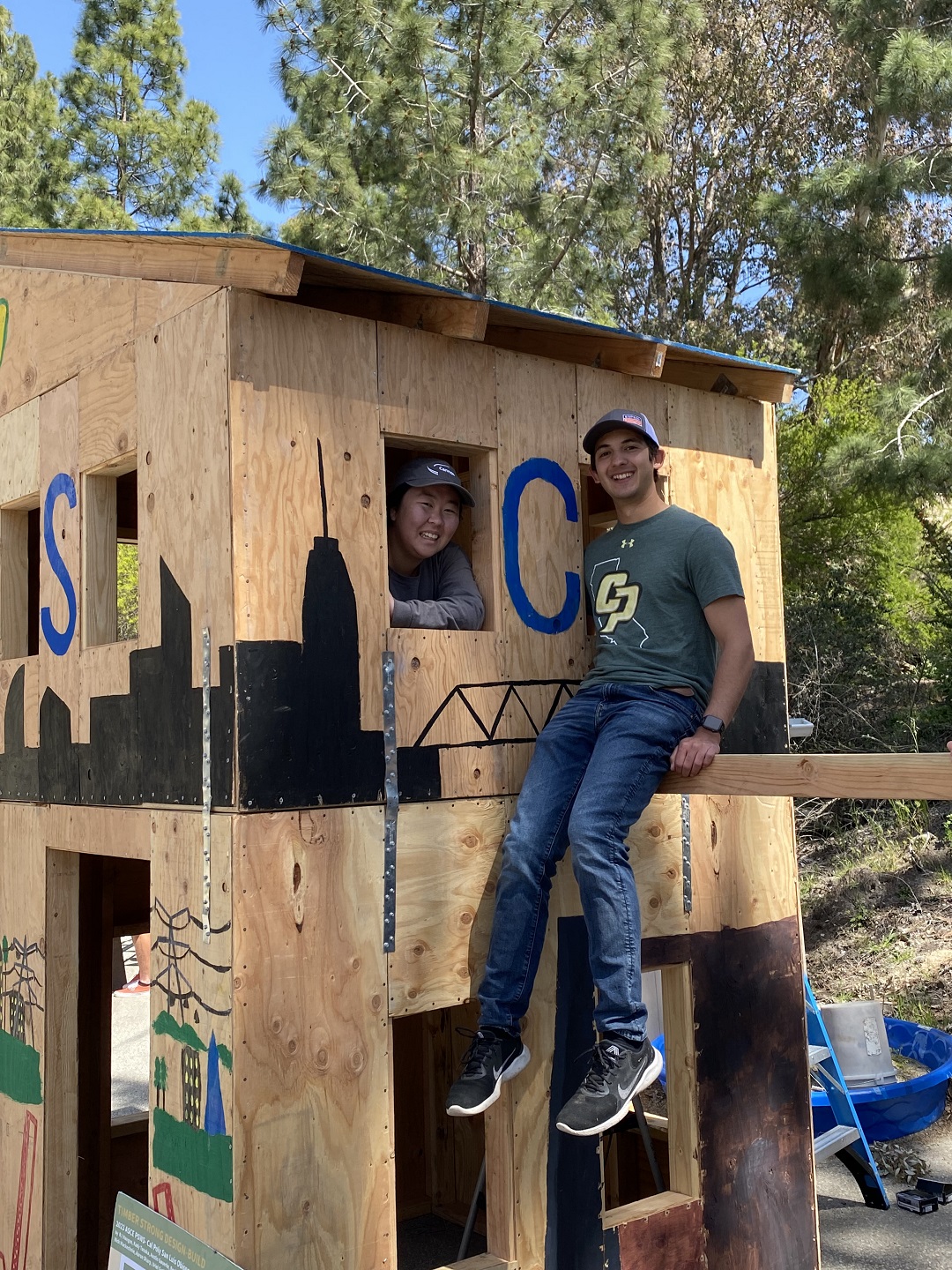
Hello! We are RJ Haugen and Kady Tanaka, this year’s captains for Cal Poly SLO’s timber design-build team. We are both fourth-year civil engineering students graduating this spring. During our time at Cal Poly, one of us (RJ) has focused on construction and the other (Kady) on geotechnical engineering. We also took a timber design class together in the fall to prepare for this project. All of our classes in the civil engineering program here have helped us learn about the design process in several different civil engineering disciplines, and we’ve developed important “soft-skills” such as teamwork, communication, and dedication in the process.
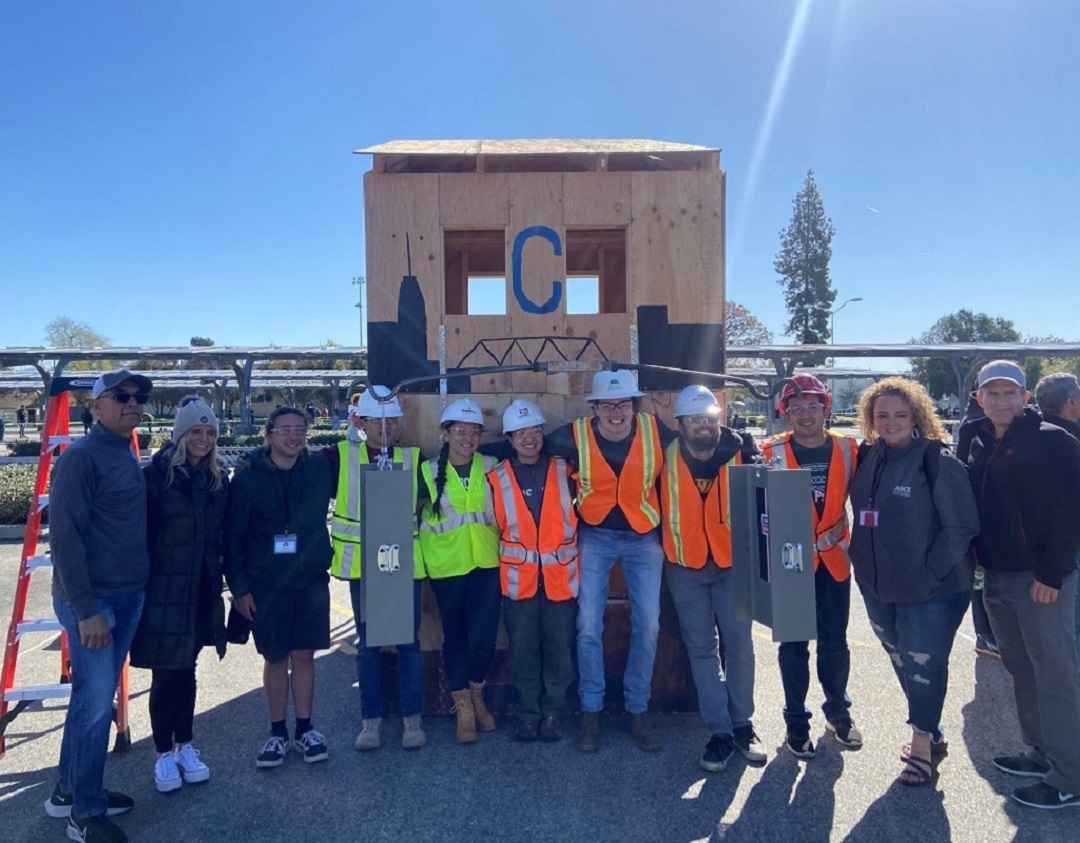
We both joined the timber design build team for the 2021 competition when it was virtual, and last year we were elected as co-captains. Kady was responsible for leading the design process, and RJ’s duties included leading the construction phase and handling deadlines. At the beginning of this school year, we started making announcements in our SCE meetings and sending weekly emails inviting people to meet with us to hear about the project. This led to the formation of our team, consisting of Ben Simpson, John Yang, Joe Shaberman, Aaron Sharp, Mia Wootton, Nick Mackechnie, Vanessa Pham, Uriel Gutierrez, and Austin Gauerke, along with us captains.

Once a team was formed mid-fall, we started considering the design of our project and finalized the design by early January. Kady planned out the calculations and helped lead the rest of our team in creating the design. Once that was complete, we had 10 weeks to complete the build before competition. In the first week, we reviewed our design and purchased our materials. We bought all our lumber from Home Depot and were provided with connectors by Simpson Strong–Tie. We spent the next four weeks framing, using hammers and nails, and also completing the BIM model of our structure.
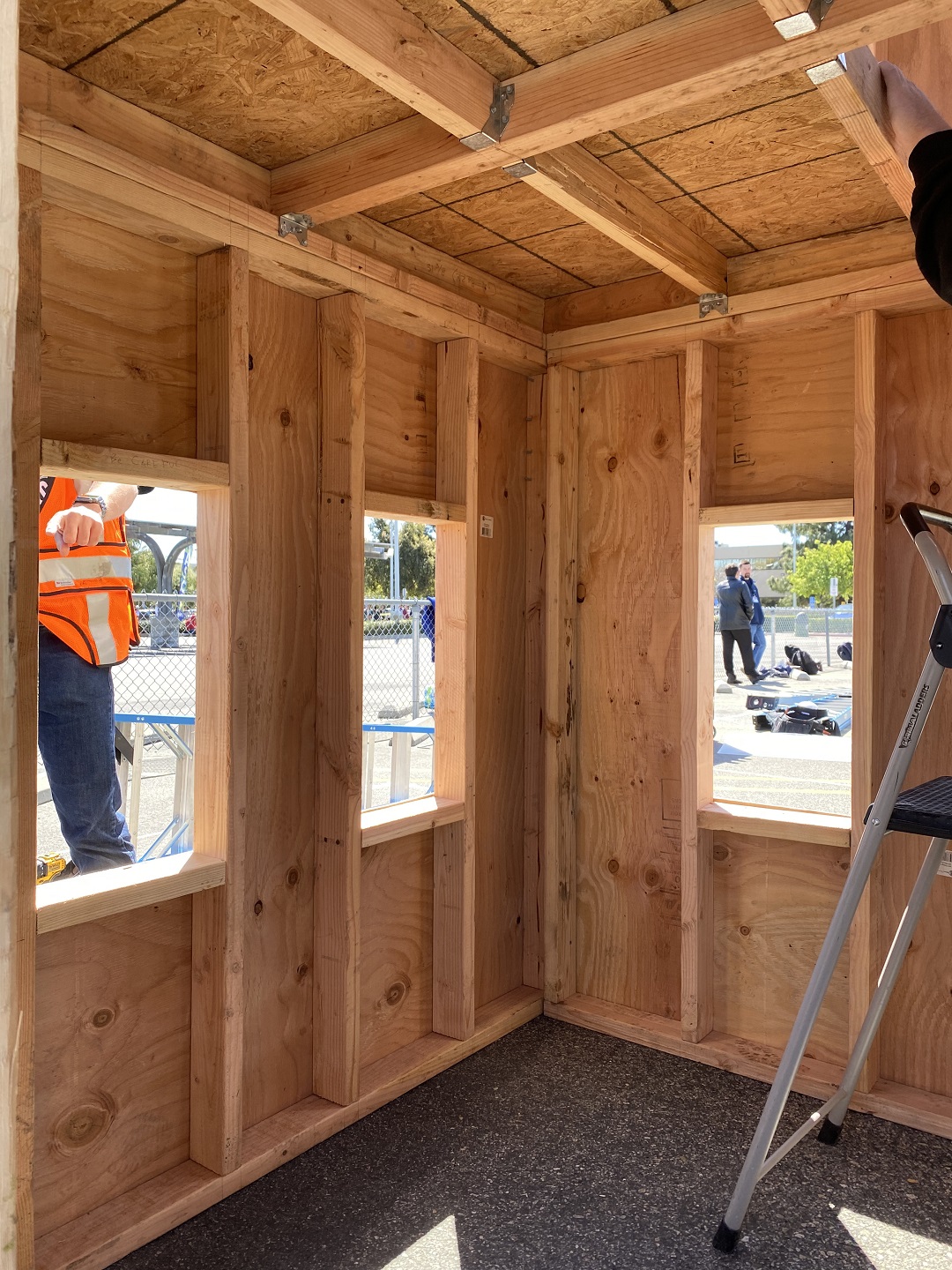
Once the framing was complete, we spent another four weeks cutting and nailing the sheathing to the walls and floor system. Because we managed to stick to the schedule, we were able to spend the last week before the competition practicing building the structure so we would be prepared for the symposium. This was our first time leading a team like this, but we feel that it went smoothly.
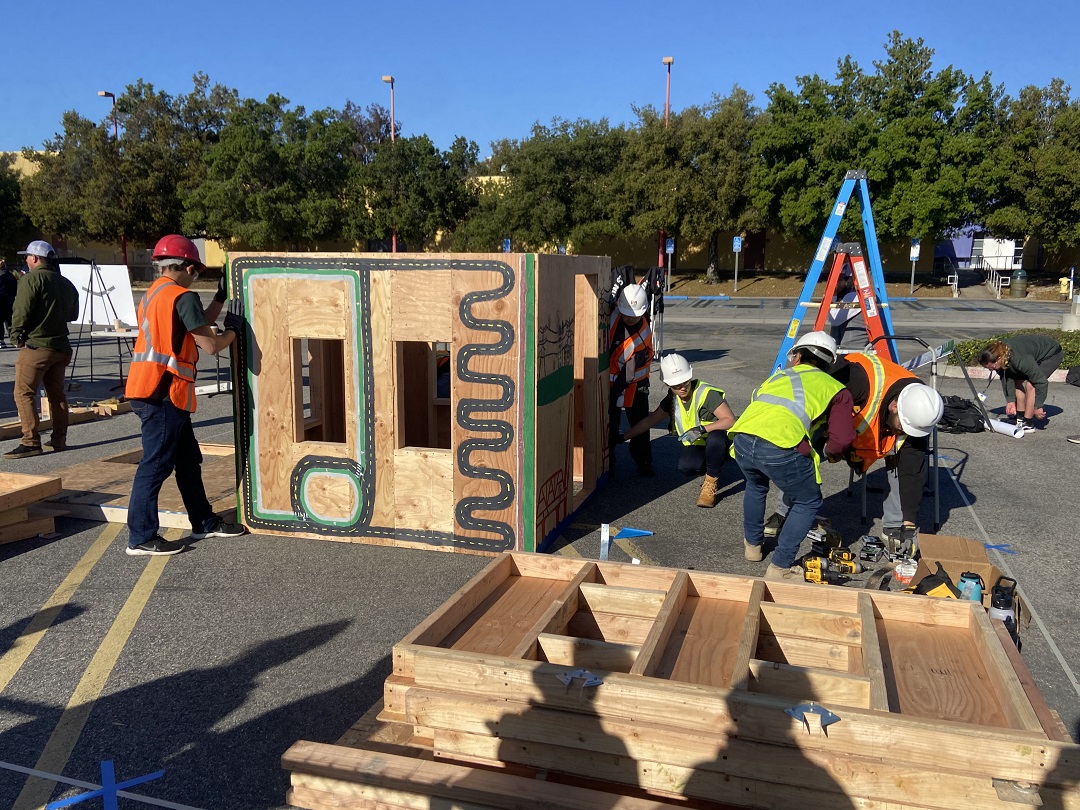
Once the design was complete, time felt like the largest constraint because we had to prefabricate as much as possible while working around everyone’s busy college schedules. Another challenge was teaching our team how to design and build a timber structure. As we mentioned, we’ve both taken a timber design class and have competed in this competition in the past. However, no one else on the team had previously learned timber design, and several had not taken any structures classes yet. To combat this, we worked to teach underclassmen basic terminology, structural design, and framing techniques so that we could all understand what is going on and work together, while still remaining on schedule. We surmounted these challenges by maintaining clear communication between the captains and the team and by staying enthusiastic about the project. We could not have done this if the rest of our team hadn’t been willing to put in the time and effort this project requires.

We are really grateful for this experience, since it gave us both the opportunity to learn about leadership and the entire building process. We appreciate how the competition allows us to see everything that goes into designing and building a structure. We experienced how constructability impacts the design, as RJ provided Kady with input while she led the design and saw how useful Kady was during the construction phase because of her deep knowledge of the design. As a result of completing this competition, Kady wants to someday build a house of her own. RJ wants to start a career in construction project management after graduating, applying some of the experience gained with this project. (I’d also love to help Kady build her house if she wants.)

This project has provided an additional element to our engineering education, teaching us about how the world around us gets built, and how we can work with a team to be part of that. Some advice we have coming out of this is for everyone to learn as much as they can, get involved in clubs and competitions, and stick through the challenges. For the past three years, this project has been a great experience, teaching us a great deal not only about design and construction, but also about teamwork and leadership. We would like to thank Simpson Strong–Tie for creating this competition, and our team for helping us win it!
